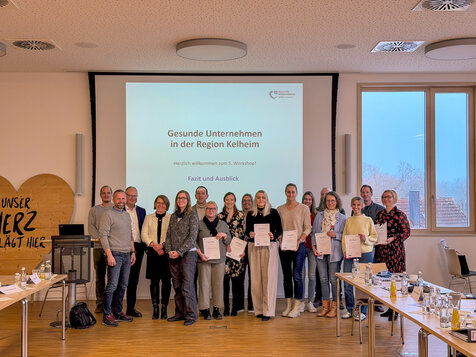
Every year again - our internal Christmas party
Once again this year, we had a wonderful internal Christmas party together. A big thank you goes to our entertainment manager Sonja Eichstätter for organizing the evening.
It has been around since 2001: the surcharge that passes on the additional costs of green electricity to small and medium-sized electricity consumers, known as the EEG surcharge for short. When Sigmar Gabriel took over the Ministry of Energy and Economic Affairs in 2013, he promised that he would limit the increase in these additional costs for consumers. Initially, he only did this for large electricity consumers - by exempting more and more of them from the EEG surcharge. However, this meant that everyone else had to pay more year after year: Until 2018, when the EEG surcharge fell for the first time in its history. By no less than €0.0009 per kilowatt hour (€/kWh), namely from €0.0688 to €0.0679/kWh.
However, this had nothing to do with the fact that the system operators received less support; instead, money that the transmission system operators had previously collected in excess was simply spent again. You could also call it a release of unjustified reserves.
The fact that this happened in the year of the Bundestag elections was probably intended to win the SPD energy minister votes from EEG critics. But as I said, this is just speculation. And it didn't help the Social Democrats either, as the election results from autumn 2017 show.The planned new grand coalition of the former people's parties CDSPDSU has already said goodbye to the former climate targets for 2020 in the draft coalition agreement. However, the same agreement states that CO2 emissions should actually be reduced in the long term. Sector coupling should help with this: Electric cars and electric heat pumps should make it possible to use less primary energy for transportation and heating buildings. But this also requires a lot more electricity - or would it be better to use ocean power? This is because a lot of wind power from the North and Baltic Seas is to be routed to the far south via thick new power lines. This is how green energy from giant wind farms reaches consumers.The EEG levy would actually fall from 2021 because old wind and solar power plants with high feed-in tariffs would no longer be supported after 20 years of operation. However, the surcharge will continue to rise for years afterwards: Offshore wind power - which often belongs to the old large-scale energy industry - plays a huge cost role in this. Agora Energiewende calculated this back in 2015.
However, because more electric vehicles and more electric heat pumps are also consuming more electricity, the EEG levy for each kilowatt hour is rising less sharply than if this consumption did not increase. This is because less coal-fired electricity from central Germany has to be sold to Austria, the Czech Republic or Switzerland at a negative electricity price: After all, coal-fired electricity is the reason why surplus green electricity is even curtailed today, but still has to be remunerated.
Electricity will still become more expensive. This is due to the planned transmission lines from north to south, often buried as so-called HVDC, i.e. extra-high-voltage direct current transmission and therefore extra expensive. This increases the grid fees for everyone. And kings in Holland or possibly even Chinese state-owned companies increase their profits. Because they own the transmission grids in Germany.But once again: what you have just read is all speculation. Or is it?
Link to the short study by Agora:
(Author: Zukunftsenergie-Team Gammel)

Once again this year, we had a wonderful internal Christmas party together. A big thank you goes to our entertainment manager Sonja Eichstätter for organizing the evening.

Healthy and motivated employees are the foundation of a successful company - especially in economically challenging times. The "Healthy companies in the district of Kelheim" network, in which nine regional companies have joined forces to establish occupational health management (OHM) not as a short-term measure, but as a sustainable and systematic process, follows precisely this claim.

What great news! We are incredibly proud and delighted that, together with our partner IWR GmbH, we have been awarded the planning contract for a 12 MW seawater heat pump including seawater extraction and a biomass heating plant as part of the cross-border UNITED HEAT project.